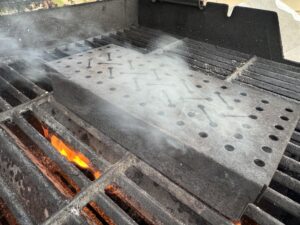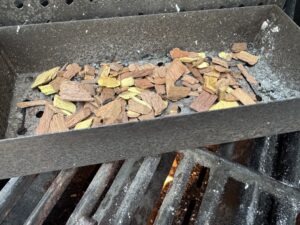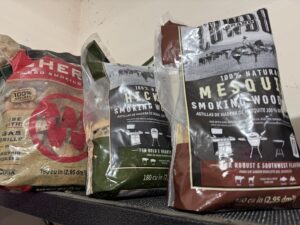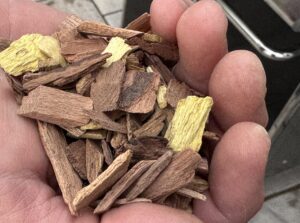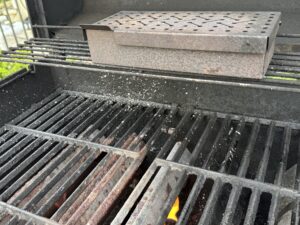Historical and Cultural Significance of Grilling
Those of us who deployed remember what it was like to sit around and eat with our buddies back at the firm base after major ops. This camaraderie where you’re hanging out with the guys who collectively have one another’s back is what you miss most from the time you the uniform. These cookouts were a rare opportunity for junior and senior personnel to interact and decompress from the pressures of missions and deployed life. I truly believe the civilian world would be a better place too if we all spent more time around the grill in our backyards (and the backyards of our neighbors).
Grilling out is symbolic of American culture because it embodies key values and traditions that are deeply rooted in the American way of life—things that we as veterans have literally fought to defend, like community, leisure, independence, and celebration. From backyard barbecues on the Fourth of July to weekend cookouts with family and friends, grilling represents a casual, social, and outdoor-centered lifestyle that prioritizes togetherness and enjoyment of simple pleasures.
Historically, grilling gained popularity in post-World War II America with the rise of suburban living. Families moved into homes with backyards, and the grill became a centerpiece for gathering. It also ties into the cultural ideal of self-reliance—managing the fire, cooking the food, and serving it straight from the grill reflects a hands-on, DIY attitude that naturally appeals to those who have served.
Additionally, grilling out aligns with American holidays and sporting events, like Memorial Day, Labor Day, and tailgating during football season. I know I always have the strongest memories of those we’ve lost when we take time to slow down and enjoy what is important. After all, this is what they would have wanted us to do. It’s not just about the food either; it’s about the ritual, the setting, and the sense of community—hallmarks of American social life.
To me, the barbecue grill symbolizes the post-World War II American dream, representing leisure and domestic life. I was mindful to add a Weber kettle grill to our wedding registry and have fond memories of setting it up on the back patio at our first house that we bought later that month.
There are many grill designs in production these days, but in the end you’re either cooking with charcoal or propane. Let’s cut to the chase; charcoal grilling gives food a smokier, richer flavor that you can’t match with propane. The glowing briquets and drippings create smoke that enhances taste in a way gas grills can’t match, even with additional accessories.
That said, you can still benefit from the speed and convenience of propane and approximate the taste of a charcoal grill with a smoker box. The method I will explain below makes enough of a difference to the point that I use my propane grill 9 times out of 10 when I cook out, only going to my Weber kettle on those relaxed summer days off when I have the time to start a chimney of briquets and feel like hanging out by the grill while I get things started.
A smoker box is the easiest, most cost-effective way to take your grilling up a notch. This method even works when it’s very cold out, although you can expect to wait a few extra minutes before you see smoke.
Adding wood chips transforms an ordinary propane-powered cookout into a sensory experience. The whispers of smoke escaping from under the lid and seeing the perfectly crosshatched grill marks you branded on your ribeye are second only to eating the finished meal.
Any meat, poultry, seafood, and vegetables you grill will benefit from this method, but in my experience it makes the greatest difference with steaks and burgers.
Wood Chips for Smoking
Wood for smoking is sold in chips and chunks. Chunks are ideal for smoking meats when it will take hours to cook, but they won’t work here. Chips will combust faster and yield just the right amount of smoke.
Don’t waste your time soaking wood chips, or wood chunks if you’re doing longer smoking, for that matter. This is one of those pieces of advice that gets passed around at backyard barbecues and just won’t die, but it’s entirely unnecessary; wood can’t produce smoke until it’s dry. The whole point is for the chips to start producing smoke as soon as the grill temperature can reach the combustion point; you’re just wasting propane otherwise. Soaking them produces steam when the heat expels the moisture, and this can potentially affect the taste of the food.
Chips are great because they start to smoke in very little time, but this also means you have a short window to get your meat on the grill and put the hood down before the chips burn though and stop producing smoke. Meat takes on the most smoke when it’s at a lower internal temperature, generally between 40-70 degrees Fahrenheit. This is because the meat’s proteins are more receptive to absorbing the smoke flavor at cooler temperatures.
I recommend keeping the following types of wood chips on hand: oak, mesquite, hickory, apple, cherry, and pecan. Woods like peach and alder are less common but are ones you might want to add if you have the storage space. A bag costs around $7 and will last a long time since you’re only using a handful at a time. Department stores like Meijer, Walmart, and Target, local DIY stores, and big box retailers will all carry at least the most common woods.
Play around with the quantity and timing based on the type of meat you’re grilling until you get the flavor you’re looking for. You’ll discover what type of wood goes best with certain meats. I have a shelf in a corner of the garage dedicated to smoking and grilling where I keep a variety of wood chunks and chips. They last indefinitely, as they aren’t affected by temperature or humidity to any meaningful degree, they are relatively inexpensive to purchase, and they open a whole new world of possibilities when you consider all the meats, seafood, and vegetables that can be enhanced with a touch of smoke.
Wood/Meat Combos
The rule of thumb for smoking is to use “heavier” hardwoods like oak and hickory for smoking “heavier” meats like beef and pork, especially if they’re heavily seasoned or sauced. Use “lighter”, sweeter hardwoods like maple or fruit woods for smoking “lighter” meats like poultry and seafood or vegetables. Apple, cherry, and hickory are the best for pork chops and tenderloin on the grill. Watch how much hickory you use, as a little goes a long way.
Here’s a link for a variety pack that includes one bag each of apple, cherry, hickory, and mesquite to get you started.
Steak and Burgers
Mesquite is known for its intense, smoky taste; it’s my go-to for any steak as well as burgers. Oak offers a mild, classic smoke flavor that works with the widest variety of meats and vegetables. Hickory is another versatile option, but be judicious in how much you use.
Salmon and Seafood
Mild and delicate flavors of alder, apple, and cherry are perfect for grilling salmon. Woods with a sweet and nutty flavor such as pecan, maple, and peach are also fine choices. I advise against stronger flavors like hickory, oak, and mesquite with salmon, as it’s easy for the smoke to overpower the taste of the fish.
Chicken
All the fruit woods (apple, peach, and cherry) are excellent choices for chicken. Other options include maple and pecan, which offer a subtle, sweet flavor.
How to Use It
I add a fistful of chips to the smoker box and place it on the grate of the grill before I light it. Place the box perpendicular to any of the burners that you plan on using.
It’s better to spread the chips evenly on the bottom of the smoker box rather than in a pile so that they all burn completely and start to produce smoke at the same time. Put the lid down after you light the grill, as you need the trapped heat for the chips to reach their combustion point. Depending on the wind and ambient temperature, you’ll start getting smoke in about 10 minutes. It works out well if you’re keeping an eye on things from inside, as the grill will be hot enough to cook on once you start seeing smoke escaping.
Throw your meat down on the hot grill and close the lid to let it take on some smoke. You’ll need to experiment with the amount of chips you use, flame height, and how long you keep the lid down based on what you’re cooking. Steaks are most tender and juicy when grilled quickly at high heat and are the one thing I cook with the lid open almost the whole time. I close the lid at the start just long enough for the meat to absorb some smoke; this doesn’t seem like it would do much, but it’s sufficient for the taste you’re looking to add. I open the lid and keep it open after I give the steaks the initial 45° turn to get perfect crosshatch grill marks.
What to Look for in a Smoker Box
A good smoker box is built from quality metal that won’t rust, has the optimal number of vents, and features hinges that won’t bind over time from all the heat cycles. This Weber stainless steel smoker box checks all the boxes and will serve you for years to come. At only 2″ tall, it’s low-profile enough to work on any grill and has a convenient tab on the lid so you can easily open it with your tongs.
I have tremendous respect for everything Weber puts its name on, from their grills and smokers to their line of seasonings. It’s more expensive than some generic one—which isn’t going to made of the same quality stainless steel—, but you’re not going to regret paying a little more for something that could easily last for decades.
In Conclusion
Some people love the ritual of starting the fire from briquets, managing the heat, and cooking purely by feel. It’s a hands-on experience that a lot of grill enthusiasts find rewarding. I count myself among them, but I can also appreciate techniques that I can use when I want to make something that tastes great and not feel like I sacrificed more flavor than I had to in exchange for time and convenience.
As always, do the work, help another gardener in need whenever you can, enjoy the fruits of your labor, and have fun along the way. Thanks for being part of the Richwood Gardens community.
If you enjoyed this article or found it helpful, I’d truly appreciate it if you shared it with a friend. Also, if you’re interested in learning about some of the items I have found most useful in my own gardening and cooking, you can check them out on my Product Reviews page. As an Amazon Associate, I earn from qualifying purchases, which helps keep me keep growing so I can bring you even more valuable content.

